The Bicycle:
We’ve all been there in a car-prison, strapped to the commute, silently boiling with crushing pressures, sitting at a red light at a street corner, pushed to the edge or made to wait as a group of cyclists consume the road. A bunch of gearheads, sleek and submissive in matching Lycra uniforms and color-coded helmets, straddling carbon-fiber road bikes, eyes flicking to smartwatches to compare leaderboards, squirting electrolyte-laden fluids down their gullets.
Meanwhile, a solo cruiser, slouched in sovranty in a Baja jacket and flip-flops, rests on a matte-grey bike with Margaritaville jammin on the speaker, sippin an adult beverage. A late-for-work commuter, pant-leg duly-cuffed, mounts a sturdy hybrid loaded with panniers stuffed with all their practical crap they need on a bike. In the shadows, smokin a joint and grippin a Natty-Daddy, a rider on a battered stolen bike drags a cart laden with worn bags, scanning the intersection before moving.
Their bikes are as different as their lives—one a precision machine, another a stylish ride, another a workhorse, another a lifeline. Yet here they are, sharing the same street-corner, bound together by the same simple invention: the bicycle.
Each one pedaling toward their own version of freedom, chasing speed, surviving the streets, relaxing, working, showing off. In a world that fixates on our differences—class, style, purpose—what does this shared corner reveal about our lives?
Let’s ride through the spectrum of cyclists, from high-tech to hardscrabble, and explore how two (or three) wheels carry us toward individual liberty and personal freedom, and what unites us when the light turns green.
What the Street Corner Reveals
The shared street-corner underscores a universal truth: freedom is personal but connective. Bikes, whether high-tech or duct-taped, are tools for agency—moving us toward goals, escapes, or survival. Bicycles do not have a reverse gear. Bikes are made for going forward.
In a world that amplifies differences, the bicycle reminds us of shared humanity: the need to move, to feel unburdened, to navigate life’s intersections. This resonates with broader societal tensions—inequality, hustle culture, urban mobility—showing how a simple invention can bridge divides, if only for a moment.
The Dandy Horse
The bicycle’s journey kicked off in 1817 with Karl von Drais’s “laufmaschine,” a wooden two-wheeler with no pedals, pushed along by the rider’s feet. Dubbed the “dandy horse,” it was a plaything for the wealthy, offering a clunky taste of mobility on the cusp of a mechanized age. It was a whisper of what was to come—a world where hooves and hay would give way to gears and grease. By the 1860s, Pierre Michaux and his son Ernest slapped pedals on the front wheel, creating the velocipede, or “boneshaker.” Its iron frame and wooden wheels rattled riders on cobblestone streets, but it marked a shift, a first creaky step toward mechanized transport that didn’t rely on a horse’s sweat or a stable’s upkeep.
The 1880s brought the “safety bicycle,” a true pivot point with equal-sized wheels, a chain-driven rear wheel, and John Boyd Dunlop’s pneumatic tires. The Rover Safety Bicycle wasn’t just a bike—it was a metaphor for humanity’s leap into mechanized freedom. Where horses once carried us, demanding feed, care, and space, the bicycle offered a stripped-down alternative: human-powered, yes, but with the efficiency of a machine. It was the first taste of mechanized transport that didn’t cage you in dependency—on beasts, on fuel, on systems. You pedaled, you moved, you were free. This design opened cycling to the masses, sparking a global craze that prefigured the automobile’s dominance, but with a raw, human edge that cars could never match.
For women, this shift was revolutionary. The safety bicycle let them trade corsets for bloomers, pedaling past the constraints of a horse-drawn, male-dominated world. Susan B. Anthony called it “the freedom machine,” and she nailed it—bikes gave women mobility, agency, a way to ride to work, to suffrage rallies, or just to the edge of town to taste the wind. They weren’t just escaping the stable; they were escaping a society that tethered them to home and hearth. The bicycle, in its mechanical simplicity, became a bridge between the organic freedom of the horse and the cold automation of the car, a sweet spot where freedom meant self-reliance, not submission to a gas pump or a grid.
By the early 20th century, bikes were everywhere—farmers pedaled to markets, kids to school, workers to factories, all powered by their own grit. Innovations like multi-speed gears and lightweight materials kept the bicycle evolving, but its core promise held: freedom on your terms. It was mechanized transport at its most human, a rejection of the automobile’s isolating hum that would later dominate. As I wrote in No (more) Automation, the bicycle stands apart from the car’s sterile cage—it’s a machine that keeps you alive, connected, free. At that street corner, every rider, from gearhead to drifter, carries that legacy forward.
No (more) Automation
The introduction of horses in the firehouse was itself a controversial innovation that had been fought tooth-and-nail by traditionalists.
Gearheads: Freedom in Mastery
For the gearhead, freedom is mastery—over speed, terrain, even the laws of physics. Their bikes are marvels of engineering: carbon-fiber frames so light they seem to defy gravity, tires as thin as a dime, drivetrains that shift with the precision of a metronome. Picture a road cyclist slicing through dawn mist on a Pinarello Dogma F, its glossy frame catching the first light, or a mountain biker bombing down a Colorado trail on a Specialized Epic, suspension soaking up rocks like a gymnast landing a vault. These riders live for the edge, where a half-second shaved off a climb or a watt gained in power output feels like breaking free from the ordinary.
Take Sarah, a 30-something tech engineer in San Francisco. Her Trek Madone, costing more than a used car, is her obsession. She wakes at 5 a.m. to ride the Marin Headlands, her smartwatch tracking cadence (90 RPM), heart rate (165 BPM), and power (250 watts). On Strava, she’s “Queen of the Mountain” on Hawk Hill, a title she defends with every ride. For Sarah, freedom is in the data, the perfect gear shift, the moment her bike feels like an extension of her will. She tweaks her saddle height to the millimeter, debates ceramic bearings over coffee at the local bike shop, and dreams of the Tour de France. Her bike is a tool to conquer limits, a machine that turns ambition into motion.
This pursuit fuels innovation: aerodynamic frames that cheat the wind, disc brakes that stop on a dime, tires that grip like glue. Gearheads push the industry forward, their obsession trickling down to make bikes better for all. But their world is one of discipline, where rules—fit, form, metrics—define success. At the street corner, Sarah’s high-tech rig gleams beside humbler bikes, a reminder that her freedom, however precise, shares space with others’. In a society that worships optimization, her ride reflects our drive to control, to perfect, to rise above.
Cruisers: Freedom in Simplicity
Cruisers chase a different freedom: liberation from the world’s demand for hustle. Their bikes blend style and modern tech—lightweight frames, internal-gear hubs for seamless shifts, or e-bike motors for effortless glides. Forget the rusty single-speeds of yesteryear; today’s cruisers, like the one below ridden by yours truly, sport sleek designs, matte finishes, multi-speeds, and all the creature comforts.
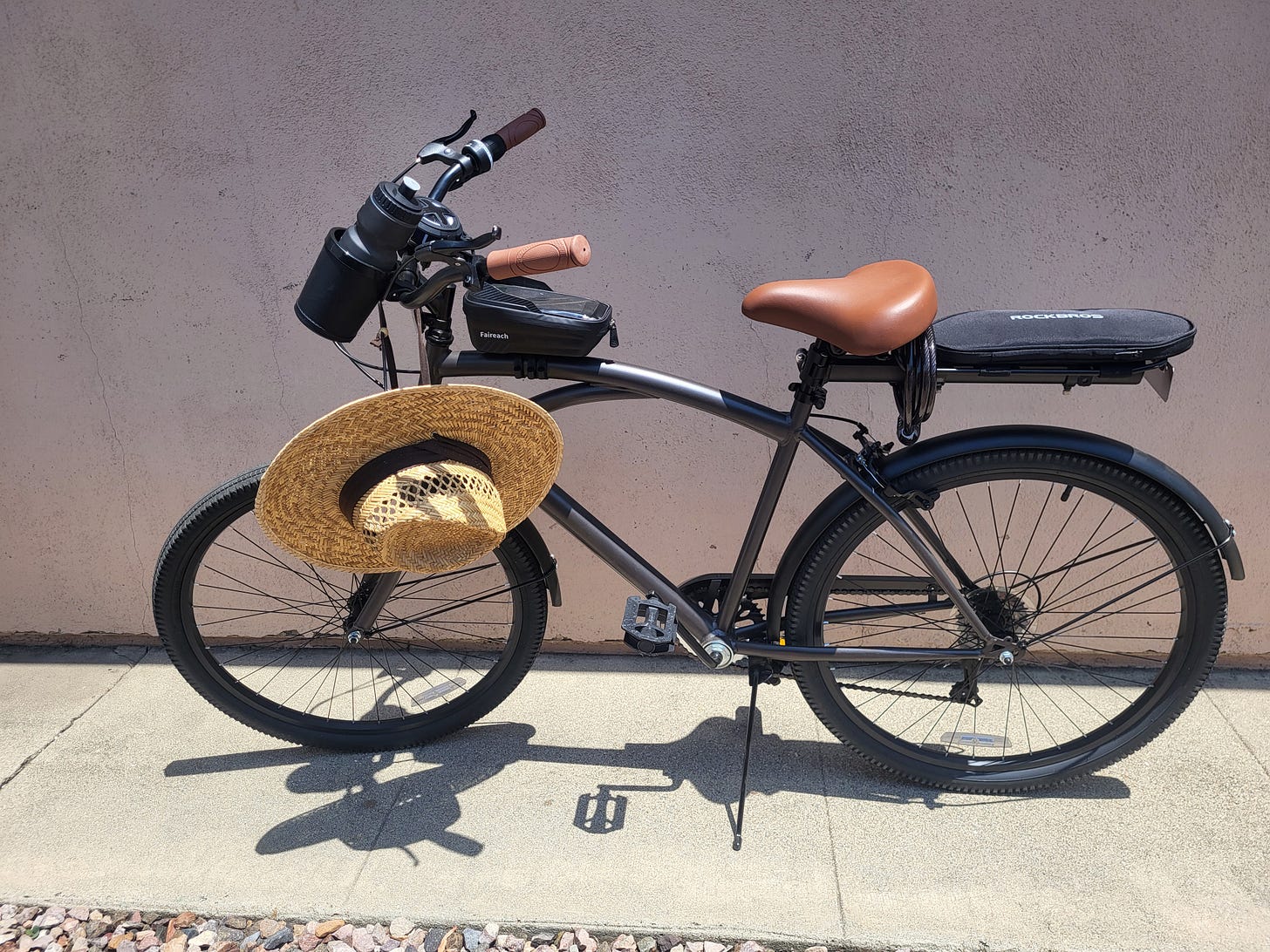
Cruisers like me reject the gearhead’s rigor. Cruiser bikes, often costing $500-$2000, are stylish but practical, with features like puncture-resistant tires or leather saddles for comfort. Their freedom is simplicity, a quiet protest against a culture that demands constant achievement. At the street corner, I nod to the gearhead and commuter, my relaxed roll a reminder that joy doesn’t need a spreadsheet. In a world obsessed with more—more speed, more stuff, more status—the cruiser’s ride is a small revolution, reclaiming time to just be.
Commuters: Freedom in Motion
Commuters find freedom in practicality, carving autonomy from the chaos of daily life. Their bikes—sturdy hybrids, e-bikes, or even tri-bikes for stability—are built for function: panniers for laptops, fenders for rain, racks for groceries. Picture a rider in Mumbai, weaving through traffic on a Hero Lectrix e-bike, or a Copenhagen parent pedaling a cargo tri-bike, kids giggling in the front box. Globally, bikes are workhorses: in the Netherlands, they outnumber people, carrying CEOs and students alike; in rural Uganda, a single-speed Buffalo bike hauls crops to market or kids to school. Bikes slip past gridlock, dodge fuel costs, and need little more than a patch kit to keep going.
Consider Aisha, a nurse in Chicago. Her Rad Power RadCity e-bike, with a rear rack and waterproof bags, is her lifeline. She pedals 8 miles to the hospital, her scrubs tucked under a rain jacket, the e-bike’s motor making the trip sweat-free even in July heat. For Aisha, freedom is the $50 she saves weekly on gas, the traffic she avoids, the sanity she preserves in a 12-hour shift. Her bike, costing under two grand, is an investment in independence, its 750-watt motor flattening hills and its lights guiding her through dawn commutes. On weekends, she might see Sarah the gearhead on the lakefront trail or yours truly at the alehouse, but her ride is about getting to work, not chasing crowns or vibes.
Commuters like Aisha are the backbone of urban mobility, their bikes a democratizing force for those who can’t afford cars or transit passes. E-bikes extend their range, while tri-bikes offer stability for older riders or those with disabilities. Their freedom is motion itself—practical, resilient, grounded. At the street corner, Aisha’s e-bike stands alongside the gearhead’s racer and the cruiser’s stylish ride, proof that freedom can be as simple as arriving on time.
The Edges: Freedom in Survival
In the margins, bikes carry a rawer freedom: survival. For the homeless, a bike is a mobile home. Picture a rider in Los Angeles, their Schwinn frame strapped with a cart of blankets and recyclables, patched tires creaking under the weight. These bikes—often secondhand or stolen, held together with duct tape—are lifelines, hauling possessions to shelters or scavenging routes. Freedom here is mobility, the ability to navigate a world that offers few options.
Take Marcus, a 50-year-old in Seattle. His beat-up Huffy, lifted from a front yard at 2 am, carries his tent, clothes, and a day’s worth of cans. He pedals to a recycling center by day, a soup kitchen by night, his bike a constant companion in a city that’s priced him out. For Marcus, freedom is the ability to keep moving, to stay one step ahead of the cold or the cops. His bike isn’t sleek, but it’s his—proof that two wheels can mean everything when you have nothing.
Then there’s the darker edge: bikes as tools of escape. In London, a teenager on a stolen BMX weaves through Camden’s alleys, snatching a phone before vanishing into traffic. Bikes are perfect for crime—silent, fast, anonymous. A 2023 report noted a spike in “bike-jacking” in UK cities, with thieves using cycles to outmaneuver police. For these riders, freedom is literal: evading capture, bending a bike to a shadowy purpose. At the street corner, they’re a fleeting blur, their presence a reminder that freedom can be a double-edged sword, shaped by desperation or defiance.
The Shared Corner
At that street corner, the cruisers, the gearheads, the late-for-workers, the homeless and skeezy, wait together, their riders as different as their wheels. One chases data, another vibes, another a paycheck, another survival. Their freedoms—mastery, simplicity, motion, escape—reflect the bike’s vast spectrum, from ambition to rebellion to necessity. Yet they share this asphalt, this fleeting moment before the light turns green. In our world, we fixate on differences—class, style, purpose—letting them divide us into tribes. The gearhead’s wealth, the cruiser’s cool, the commuter’s grind, the outcast’s struggle: these dominate our gaze, obscuring what’s shared. But the bike, and this corner, remind us of our common thread: the human need to move, to be free, to find our way.
What’s your freedom on two wheels? Are you chasing a Strava crown like Sarah, coasting to a taco truck like me, dodging traffic like Aisha, or pedaling to survive like Marcus? Maybe you’ve seen a bike’s other side, in a thief’s blur or a neighbor’s tri-bike. Share your story below, or tell us about the ride you’ll never forget—because at this corner, there’s room for every rider.
Here’s a very cool video about yet another bicycle, yet another lifestyle, all pointing to the same pursuit: Freedom.
Enjoy your lives,
Ric
Compass Star Wordsmith is a reader-supported publication. To receive new posts and support my work, consider becoming a free or paid subscriber.

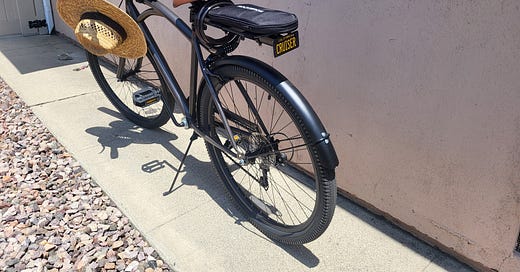










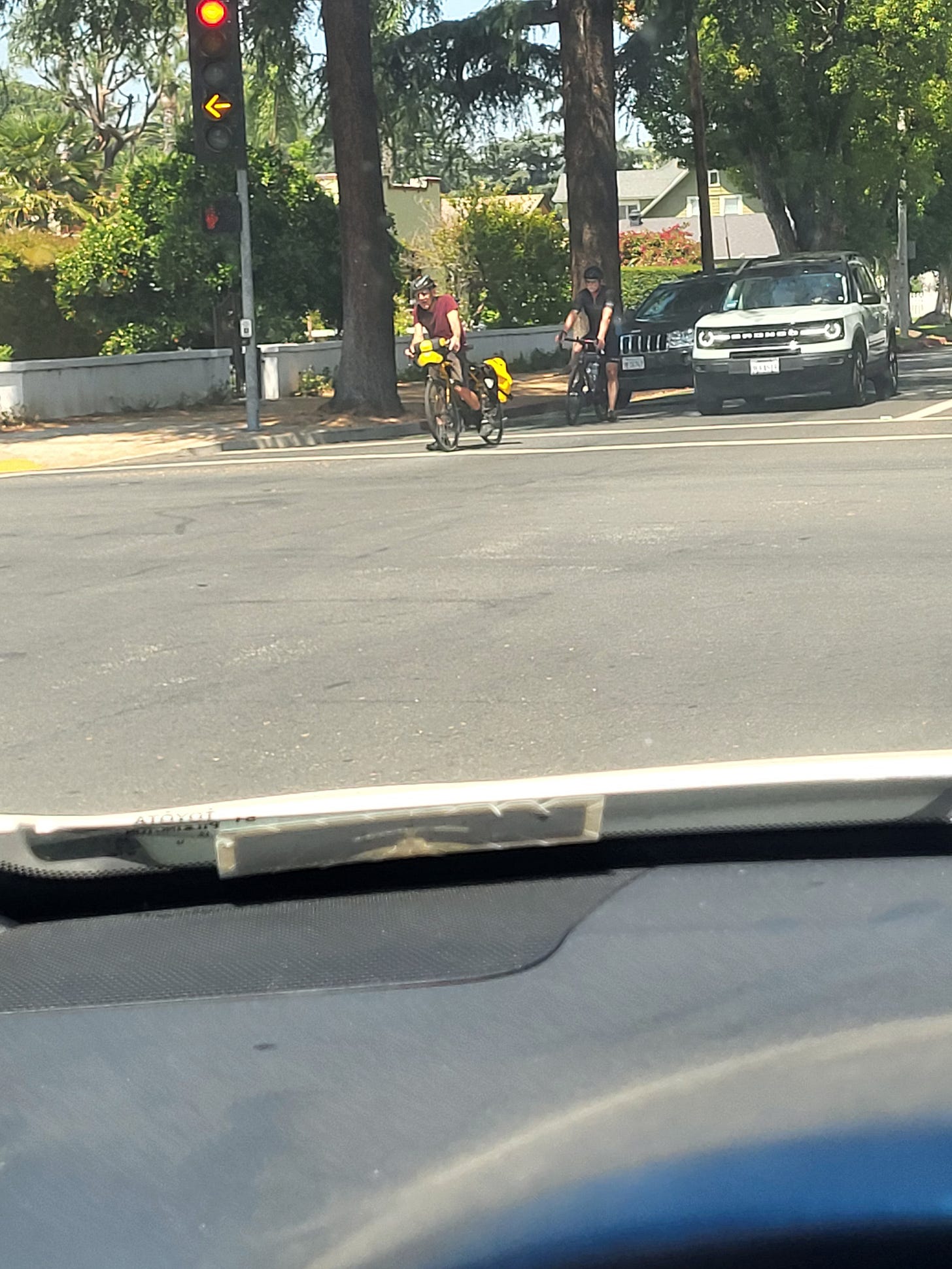
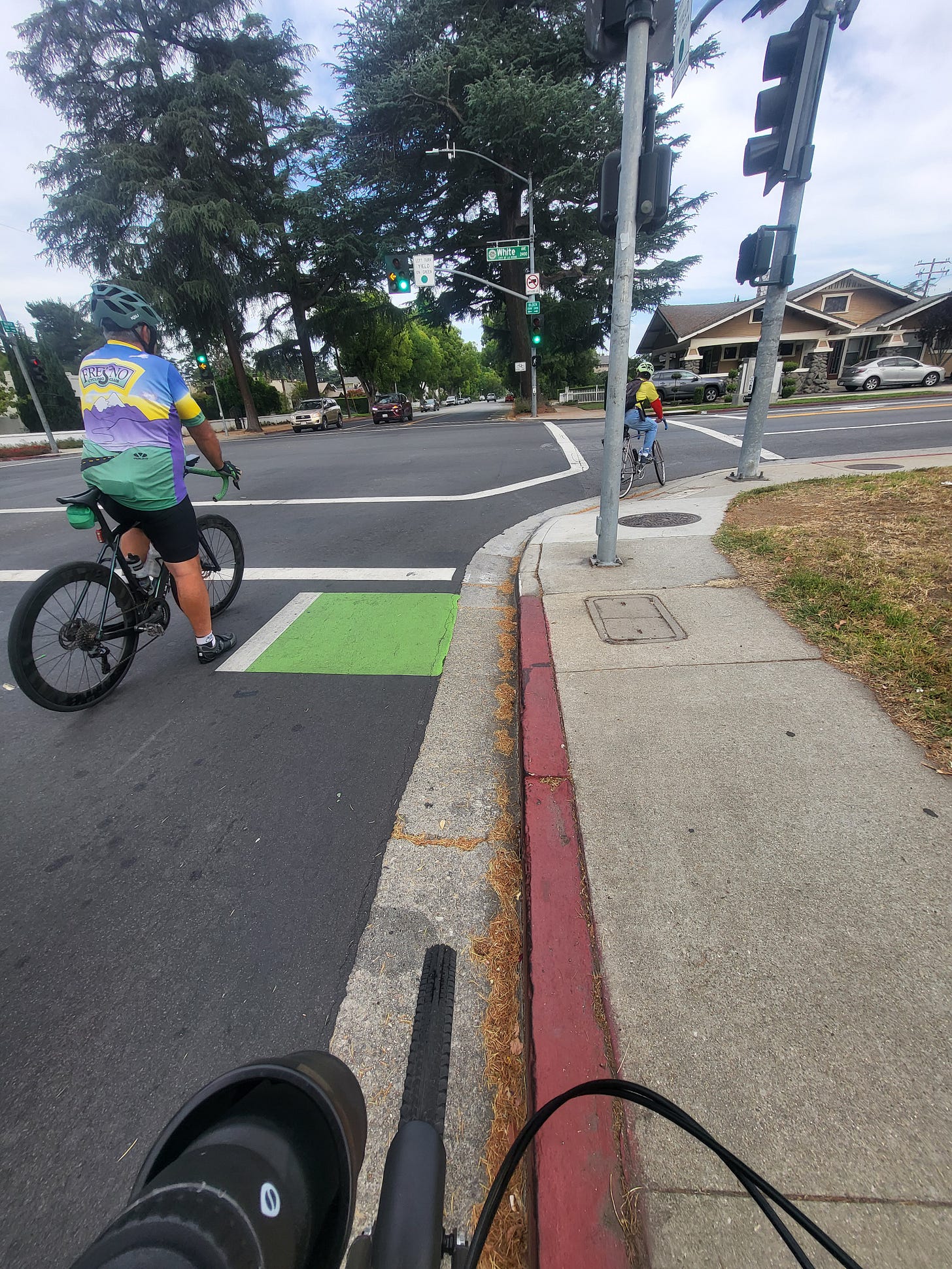



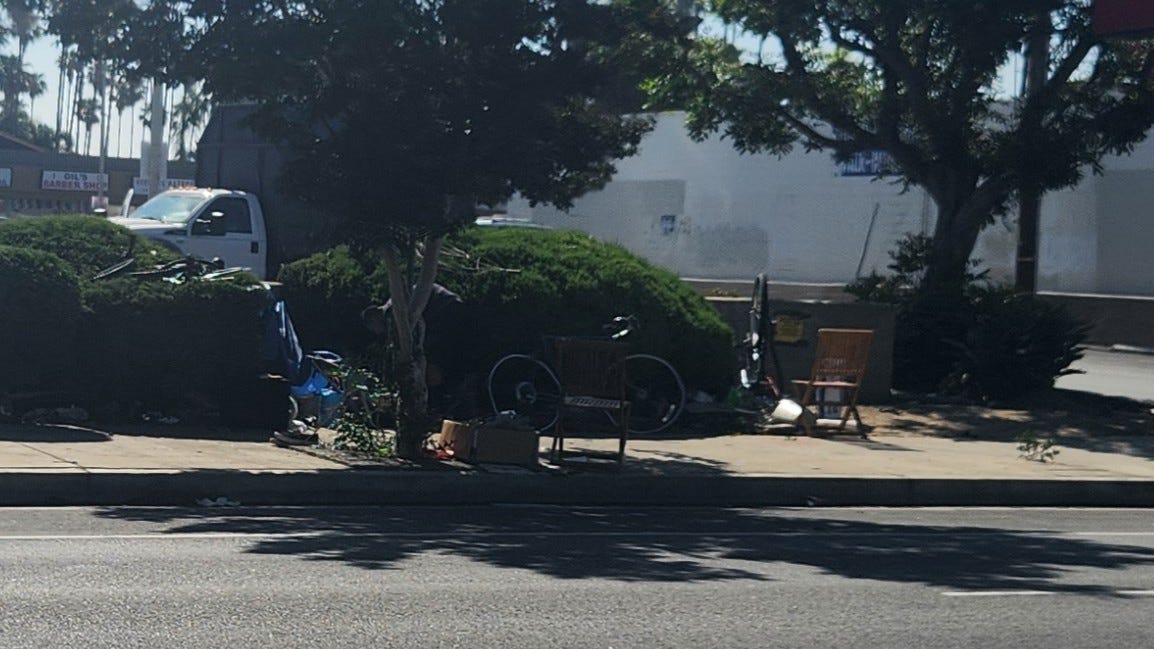
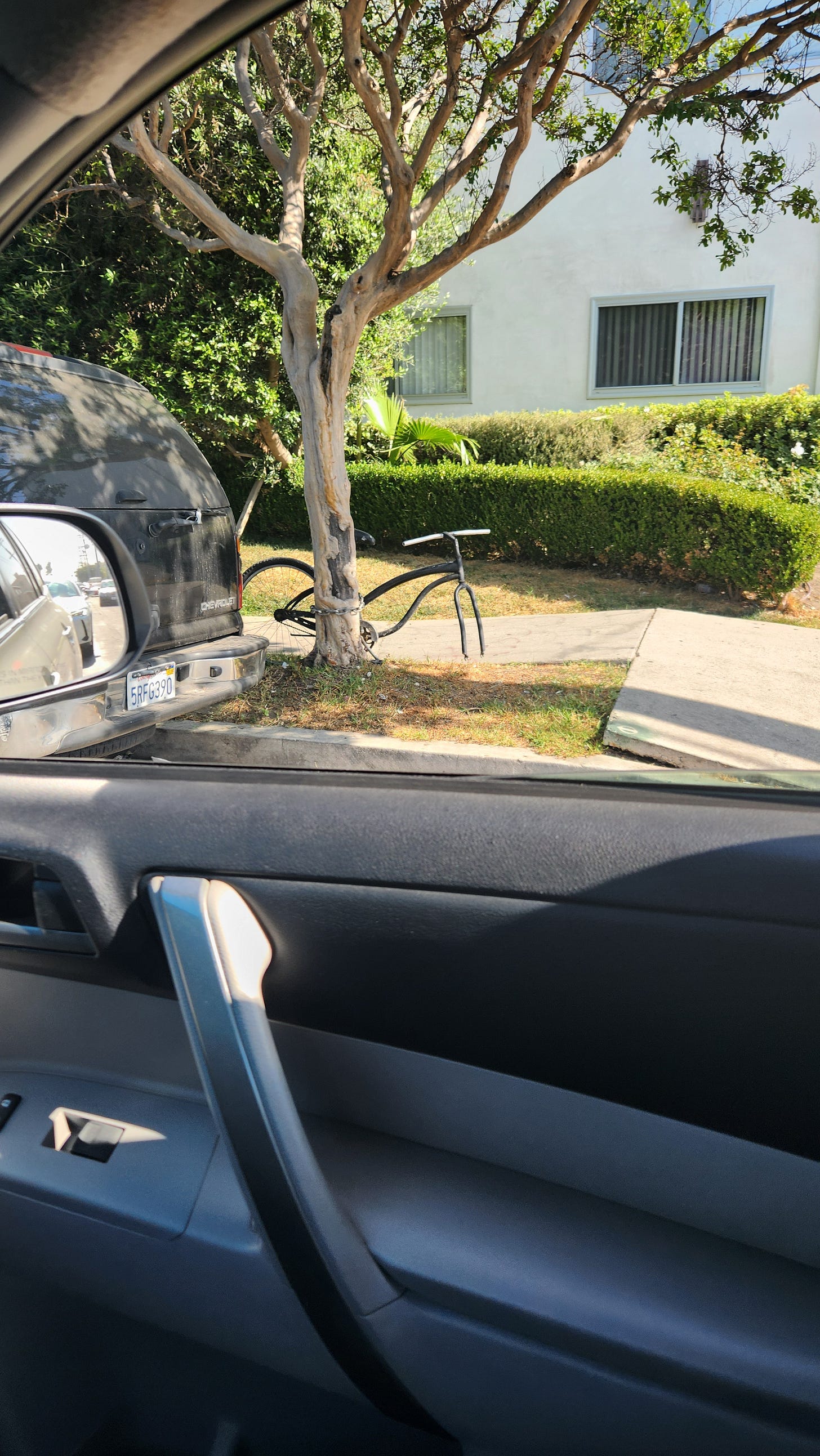
I love mountain biking. I've never gotten into commuter biking.
Beautifully written mr. Cruiser